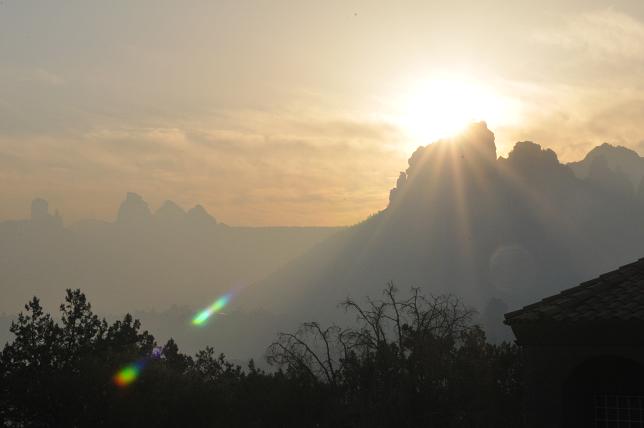Just after 2 p.m. on June 4, the U.S. Forest Service issued its final update regarding the Slide Fire, announcing the blaze, which consumed 21,227 acres over 16 days was finally 100 percent contained. Smoke affected thousands throughout the Verde Valley.
In the weeks to come, forest officials and specialists will assess the burn area for the types of damage it received. The Coconino National Forest will reopen areas that no longer pose a danger to hikers, residents and recreationists and vice versa.
Slide Rock State Park is open again, although the swim area, which is the park’s major draw, remains closed indefinitely. Heading into the summer, tourists from around the country, especially those from the hot deserts of central and southern Arizona, play in the cool park waters and later spend their money at businesses in Oak Creek Canyon and the rest of the Verde Valley, be it at Jerome art galleries, Sedona restaurants, Cottonwood wineries or Tuzigoot or Montezuma Castle national monuments.
Most of the Slide Fire burned the plateau above the west side of the canyon beyond the view of all but the most strident hikers. Many ridges and outcroppings burned, but the creek area is still lush and green and the riparian ecosystem will recover.
The Sedona Fire District was first on the scene, but was joined by engines and firefighters throughout the Verde Valley. Local fire crews and the hundreds of wildland firefighters who joined them acted quickly to save homes, businesses and other structures and kept the fire from jumping the creek and burning the east side.
Had the fire struck in Sycamore Canyon or along Fossil Creek, crews would have responded with the same eagerness and speed to save as much of those pristine areas and the communities that exist nearby.
Last week, a car fire on State Route 89A near Cottonwood nearly set the grass on fire, which could have spread a wildfire quickly had the winds been different.
Wildfire is a natural part of the Northern Arizona ecosystem. Fire thins out parts of the forest, allowing new growth. The fire cycle for ponderosa pine is five to 10 years, but generally these fires are small, naturally caused, low-intensity blazes rather than massive conflagrations that consume tens of thousands of acres.
Most of Arizona is now under major restrictions. We are still in the beginning of the 2014 fire season. Be aware of fire restrictions both in town and in the wilderness. Warn friends and visitors about the danger, especially if you see someone unwittingly smoking on the forest or setting up a campfire at a campsite. Extinguishing a cigarette is lot cheaper than paying thousands in fines for starting a wildfire.



